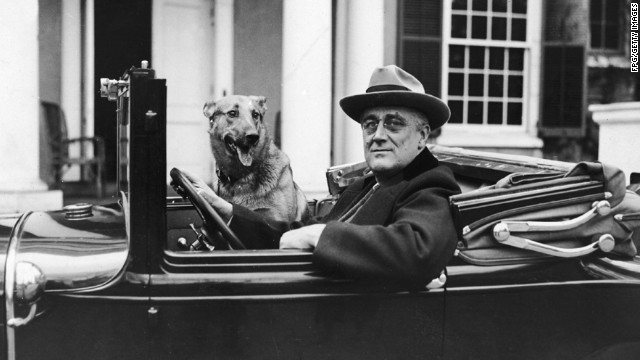[ad_1]
More than a year later, here we are: it’s the Fourth of July and the President is indeed planning to roll out tanks, stand with generals and preside over fireworks on the National Mall, at striking taxpayer expense. Though it is not a parade. That event — America’s annual National Independence Day Parade, a traditional patriotic celebration quite apart from any Trump event and replete with fife and drum, floats, balloons and dignitaries, steps off at 11:45 a.m. on Constitution Avenue.
Trump has taken much criticism for his narcissistic “event,” but it wouldn’t be the first elaborate military display in Washington.
This commentary first published February 7, 2018.
And yet, it wouldn’t be the first grand military parade in Washington. There was one in January 1941, for example, after Franklin D. Roosevelt’s inauguration to an unprecedented third term in office. That past spring all the European democracies, with the exception of Great Britain, had fallen to the relentless Nazi forces, and in Asia, Japan had extended its reach into China.
It was a year before Pearl Harbor, and the nation was not yet at war, but FDR knew he would have to educate Americans and convince them and Congress that the nation must nevertheless be prepared and mobilized for war. He decided a military parade would be a dramatic display of the nation’s willingness to fight to preserve its way of life and its determination to protect Great Britain from the Nazi onslaught.
First came a platoon of Washington motorcycle police, and behind them rode Gen. George C. Marshall, the Army chief of staff, on horseback. Then came military bands, units from the Navy, Coast Guard and Marines, along with West Point cadets and Annapolis midshipmen. They were followed by scout cars, motorcycles, trucks with anti-tank guns, anti-aircraft guns, field guns and cannons. Military planes soared in formation overhead.
For the United States it was something he called “the democratic aspiration,” a living faith, a quasi-divine purpose in national life, an ongoing quest for freedom, justice, equality, happiness. If that “spirit of America” were killed, “even though the nation’s body and mind, constricted in an alien world, lived on, the America we know would have perished.”
He believed that in the months and years ahead, under the threat posed by the Axis powers, Americans would need to make sacrifices to keep the spirit of America alive. They would also need to practice lives of kindness and generosity that included a sense of responsibility for others — for the neighbors they knew as well as for the people they didn’t know.
Perhaps we should ask ourselves if we risk losing that “spirit” of America under President Trump. A military display orchestrated merely to entertain a childish president is a futile and meaningless spectacle, unless it is accompanied by a real understanding and acknowledgment of America’s vital military, moral and humanitarian role in the rest of the world.
This was the kind of essential role that America played when it became the arsenal of democracy in World War II and when, after the war, it created the Marshall Plan to restore health, democracy and prosperity to a war-ravaged Europe — the opposite of the nativist, nationalist, isolationist and counterproductive mentality of “America First.”
America is still an ongoing experiment — let us work to keep that “sacred fire” and the moral and ethical “democratic aspiration” alive.
[ad_2]
Source link



